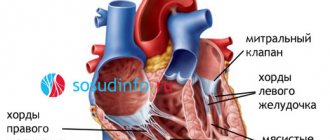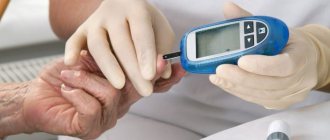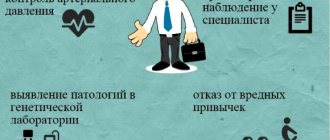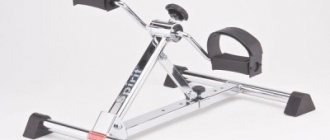Good afternoon, my dears. It's time to relax a bit and chat. Yesterday I came face to face with a problem. Or rather, my son’s nose began to bleed for no apparent reason. Can you imagine my concern? I immediately remembered the case of my classmate, who often suffered from nosebleeds, but in the end it turned out that the blood was not just coming from the nose, but from... the esophagus! In general, I urgently decided to look into this topic. And now I can firmly say: nosebleeds in children, the causes of which can be very different, are not such a harmless phenomenon.
Today I will tell you where this phenomenon originates, when a child should be immediately shown to a doctor and how to provide first aid.
Why does a child's nose bleed?
Do you know, dear readers, where the Kisselbach zone is located for you and your baby? No? So I didn’t know. Meanwhile, it is from this that most nosebleeds stem. This very area is located in the front of the nasal septum. There are so many capillaries that if they all suddenly burst, you wouldn't have enough paper tissue to stop the bleeding.
90% of cases when a baby bleeds from the nose are associated with the sensitivity of this area. You've probably heard the expression “thin blood vessels”? Scientifically it is called differently, but the essence is the same. Where it is thin, it breaks (read: “bursts”).
But 10% remains for more serious reasons. You also need to know about them, just in case. Blood can exit through the nose from the bronchi, lungs, trachea, stomach, and esophagus. How to distinguish such blood loss from more harmless ones? With pure nosebleeds, the blood is pure, without clots or impurities, it flows down the back wall of the throat and is quite easy to stop. Below I will tell you how to properly stop such bleeding. But more dangerous cases require immediate in-person consultation with a doctor.
Why a child may bleed from the nose - the causes of one-time and frequent nosebleeds in children
The tendency to nosebleeds is due to the anatomical features of the vasculature, and therefore some people experience nosebleeds often, while others rarely. We are, of course, talking about bleeding for no apparent reason (for no reason at all), and not about the standard situation when someone hit you in the nose with a fist or rattled your nose off a stool on the floor. There are serious causes of nosebleeds, such as high blood pressure or bleeding disorders, but in all cases of serious causes, nosebleeds are not the only symptom, there are always other, equally concerning signs. The main factor influencing the frequency of nosebleeds in most ordinary children (i.e., those without serious congenital diseases and anatomical defects) is the condition of the nasal mucosa. (Pediatrician E.O. Komarovsky)
During nosebleeds, the general condition of the child changes:
- weakness appears;
- blanching of the skin occurs;
- dizziness occurs;
- thirst increases;
- heart rate increases;
- pressure decreases;
- loss of consciousness may occur.
The younger the child, the more severely he suffers from nosebleeds. Rapid and excessive blood loss, especially in infants, can be fatal.
Causes of nosebleeds in children:
- Mechanical damage: bruises, fractures, injuries from foreign objects.
- Inflammation of the mucous membrane of the nasal passages: rhinitis, sinusitis.
- Medical procedures, including operations in the nose area.
- Deviation of the nasal septum.
- Atrophic rhinitis.
- The presence of neoplasms: polyps, tumors, etc.
- Increased body temperature and blood pressure.
- Heat and sunstroke.
- Infectious diseases.
- Blood clotting disorder.
- Increased physical activity.
- Changes in atmospheric pressure.
- Deficiency of calcium and vitamins K and C.
- Liver diseases, including hepatitis.
- Hormonal changes during adolescence.
- Reduced immunity.
- Dry air in the room where the child is.
Frequent nosebleeds often indicate the presence of erosion on the nasal mucosa. Erosion can occur after rhinitis. If you have this problem, you need to contact an ENT doctor so that he can identify exactly where the nose is bleeding and make every effort to close this erosion. The nasal passages with such problems may be clean, but it is necessary to look for the problem not there, but in the very, very anterior parts of the nasal septum - that is, in those places that otolaryngologists often simply skip - they are usually interested in more serious problems. When visiting a doctor, you should ask the doctor to specifically examine the Kisselbach plexus area. (Otolaryngologist, pediatrician I.V. Leskov)
If frequent nosebleeds occur, it is necessary to show the child to an ENT doctor, hematologist, ophthalmologist, surgeon, cardiologist, neurologist, oncologist, endocrinologist to identify the causes of this phenomenon and prescribe appropriate treatment, which may include:
- therapy with vitamins and calcium supplements;
- cauterization and other medical procedures.
First aid for nosebleeds
If you didn’t have life safety or basic first aid at school, then for a few minutes I’ll retrain as a teacher and tell you how to stop nosebleeds.
1) The child should take a reclining position, in which the head will be higher than the level of the body. Do not throw your head back, but rather tilt your head slightly forward. If the baby just lies horizontally, the blood will not stop for a long time and will flow into the esophagus and respiratory tract.
2) Never ask your baby to blow his nose. It won't help. Better calm your child down. Tell him that everything will pass soon, there is no need to cry. A child going into hysterics risks swallowing his own blood, and the blood vessels in the mucous membrane will burst even more.
3) Place any vasoconstrictor drops (appropriate for age) into the nose. If the bleeding does not stop, apply the same drops to a cotton or gauze swab and insert into the nostrils one by one. In this case, the tampon should be slightly pressed against the nasal septum. If you don’t have any drops on hand, 3% hydrogen peroxide will also work.
Usually, these measures are enough for “standard” bleeding, and after 15-30 minutes the blood stops flowing. If it does not stop, then do not hesitate and call an ambulance. You may need more serious treatment.
Methods of treating a negative process
As part of the treatment of nosebleeds in a child, it is possible to carry out both home and outpatient treatment, as well as send a small patient to a hospital.
Specific recommendations can only be given by the attending physician or by an ambulance team, which will expertly assess the child’s condition and recommend further actions.
First aid for a child
Basic measures to provide first aid for nosebleeds in a child:
- Ensuring proper breathing. In case of nosebleeds, the child must be calmed down and forced to breathe deeply and slowly, which helps reduce psycho-emotional stress;
- Giving the correct position. The small patient is seated on a chair, his head is partially raised, but not thrown back, and accordingly leans slightly forward. If blood flows from the nasal passages, then it is worth placing a container under the corresponding area, which will allow you to visually monitor the amount of blood loss;
- Primary stop. The child should carefully blow his nose and free both halves of the nose from accumulated blood clots. After this procedure, Sanorin is instilled into the corresponding nasal passages. After 5 minutes, 10 drops of 3 percent hydrogen peroxide are administered intranasally in both nostrils in the same way. The last stage is nasal instillation of a five percent solution of aminocaproic acid into the nasal cavities (after 5-10 minutes);
- Applying cold. Applying cold to the nose area, ice wrapped in several layers of cloth, a heating pad with cold water, or an appropriately cooled towel will help stop nosebleeds in a child. One cycle of events should not exceed 10 minutes, after which it is necessary to take a break for at least five minutes and carry out the procedure again. This restriction will help avoid hypothermia and frostbite of the skin, soft tissues and mucous membranes of the nose;
- Mechanical stop of bleeding. If the measures suggested above do not help stop a child’s nosebleeds, then as a supplement it is worth trying to insert small cotton swabs into the nasal passages for 10 minutes, previously soaked in hydrogen peroxide or aminocaproic acid. As an alternative, it is rational to use a hemostatic sponge to stop nosebleeds.
Drug treatment
As part of the provision of emergency qualified medical care or in a hospital setting, specialized doctors carry out further actions to neutralize nosebleeds in a child. The basis in this case is drug treatment. The main treatment for nosebleeds in children includes:
- Use of hemostatic drugs, consumed orally or injected. The basis used is 10 percent calcium chloride in the amount of 2 teaspoons, 12 percent ethamsylate, as well as vikasol and vitamin C - the first is a precursor of vitamin K and enhances the effect of hemostatic drugs, and the second has a general strengthening effect on the vascular structures of the nose .
As an alternative to vitamin C, Ascorutin is often used for nosebleeds in children.The standard dosage of Ascorutin for nosebleeds, for children from 3 to 12 years old, allows the use of half a tablet up to 3 times a day (in total - 1.5), while adolescents over 12 years old can take two tablets at a time, after which maintenance therapy is carried out according to one tablet 3 times a day with a maximum duration of procedures of no more than 1 week in a row;
- Performing anterior tamponade. This procedure is a classic technique for stopping bleeding from the anterior nasal cavity. To carry out the action, a gauze turunda is used, which must be inserted into the nasal cavity: it mechanically presses the bleeding area.
The tampon itself is moistened with aminocaproic acid or hydrogen peroxide to improve the effect.The width of the corresponding product ranges from 0.5 to 1 cm, the length reaches 50 centimeters. After carefully inserting the tampons into the nasal passages, a sling-shaped fixing bandage is applied on top;
- Surgical intervention. In especially severe cases, to stop extremely severe nosebleeds in a child, most often associated with the presence of pathology of the posterior sections of the corresponding localization, surgical techniques can be used to carry out measures. Typical procedures are acid cauterization, injection of lidocaine under the membrane, electrocoagulation, removal of spines and ridges of the nasal septum, ligation of great vessels, etc.
When is it necessary to see a doctor?
Immediate consultation with a doctor or calling an ambulance is rational in case of confirmed injuries to the nose or skull, or excessive bleeding that does not stop for a long period.
It is also rational to go to the hospital in case of acute viral infections in children, accompanied by underlying pathology, including a sharp deterioration in health, dizziness, weakness, vomiting, pale skin, loss of consciousness, and so on.
Call "03"
Remember other cases when you can’t even try to do something on your own and stop bleeding at home:
1) Very heavy bleeding, which threatens serious blood loss;
2) Nose injury;
3) Head injury, when blood flows from the nose in pink color (with an admixture of clear fluid). In this case, doctors may talk about a fracture of the base of the skull;
4) Diabetes mellitus and high blood pressure;
5) The child fainted or lost consciousness;
6) Poor blood clotting (hemophilia). This also includes cases where bleeding occurred while taking drugs that slow down clotting (indomethacin, aspirin, ibuprofen, heparin);
7) Bloody vomiting (suspicion of gastric bleeding), blood with foam (possibly of pulmonary origin).
What causes blood vessels to break?
The immediate cause of any bleeding is damage or rupture of the blood vessel wall. After the baby is given first aid, it is necessary to figure out why this happened.
Damage or injury
A child's nose injury led to nosebleeds.
Babies are usually quite active: they often fall and hit themselves. Injuries to the nose or bridge of the nose can cause blood vessels to rupture. Children often pick their nose - their nails can scratch the delicate mucous membrane, which can cause bleeding.
Incorrect nose blowing
Sometimes a child tries to blow his nose too hard, which can also cause a blood vessel to rupture. Blowing your nose correctly means pressing the wing of one half of your nose while blowing mucus out of the other.
Coughing
Some diseases - such as cystic fibrosis, bronchial asthma, whooping cough - may be accompanied by a severe cough. This increases pressure in the blood vessels inside the nose, causing them to rupture.
Dry air
Heat and dry air can dry out the mucous membranes so much that the walls of blood vessels crack and bleeding occurs. This can happen at any time of the year: in winter, heaters create dry indoor air, and in summer, intense heat and wind.
Foreign body
A foreign body in a child's nose led to nosebleeds.
Children can often insert small objects into their nose, which can damage the delicate mucous membrane and cause bleeding.
Infections
Some upper respiratory tract infections - acute respiratory infections, ARVI and various sinusitis - provoke inflammation of the nasal mucosa to such an extent that small vessels swell, rupture and bleed.
Allergy
Sneezing can lead to nosebleeds in a child
. Pollen, dust, particles of fur and even washing powder can cause allergic rhinitis in a child - a form of allergy in which the nasopharynx becomes inflamed and blood vessels can be injured.











